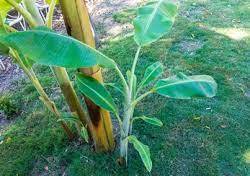INTER-CULTIVATION- MEANING AND TYPES
Inter cultivation in Farming generally involves operations like tilling, weeding etc. in rows of standing crop. It refers to cultivation practices taken up usually after sowing of crop.
There are several inter cultivation processes performed of which three important practices are:
- Thinning and gap filling,
- Weeding and hoeing
- Earthing up.
Thinning and Gap filling
- In order to maintain optimum plant population, thinning and gap filling operations are performed.
- Thinning is the removal of excess plants leaving healthy seedlings; whereas, Gap filling is performed to fill the gaps (where early sown seed had not germinated) by sowing of seeds or transplanting of seedlings.
- Thus, these are simultaneous process. Normally, these are practiced a week after sowing to a maximum of 15 days.
Weeding and Hoeing
- These are also simultaneous process.
- Weeding is removal of unwanted or undesirable plants; whereas, Hoeing is the process of disturbing the top soil by small hand tools for promoting aeration into the soil.
Earthing up
- It is the technique of piling soil up around the base of a plant for desired growth.
- It Supports plants during windy weather, promotes rooting. In potato, burying the potato in an additional few inches of soil yield is improved and the harvest remains edible.
- It is carried out in wide spaced and deep rooted crops. It is done around 6-8 weeks after sowing / planting in sugarcane, tapioca, banana, etc.
Other Inter cultivation practices
Besides the above three operations, some other inter cultivation practices are also performed by farmer. These are briefly described below.
Harrowing
- Harrow is basically a farm implement used for surface tillage. Its purpose is to break clods and provide tilth soil structure suitable for planting seeds.
- Stirring or scraping the surface soil in inter and intra row space of the crop using hand tools or other farm implements is called harrowing.
Roguing
- Removal of plants of undesirable characteristics from the crop field is called rouging.
- Plants being removed may be diseased, unwanted variety etc.
Topping
- Removal of upper buds or terminal growing portion is called topping.
- In cotton, removal of terminal growing point once from plants at a height of 1-1.2m to protect further terminal growth and to encourage sympodial branching and boll development by diverting the energy flow.
- In tobacco, removal of flower heads and or upper leaves or top leaves from the plants to improve the size, body and quality of leaves. So, energy and nutrients are diverted from flower head to leaves.
Propping
- The term propping is used in both banana and sugarcane. Usually, bamboo sticks or wooden sticks are used to support the plants.

De-suckering
- The removal of suckers in banana and tobacco plant is called de-suckering.
- In tobacco, when plants are topped, lateral branches or axillary buds grow; the removal of such lateral buds or suckers to divert energy and nutrients from flower head to leaves is called de-suckering.
- In banana, it is a form of asexual or vegetative reproduction that makes the banana plant perennial. Removal of lateral buds/suckers from the plant is called De-suckering. It reduces unnecessary competition among suckers and improves the quality of bunches. It is also called thinning of suckers.
Read more…
TECHNICAL TERMS ASSOCIATED WITH CROPS